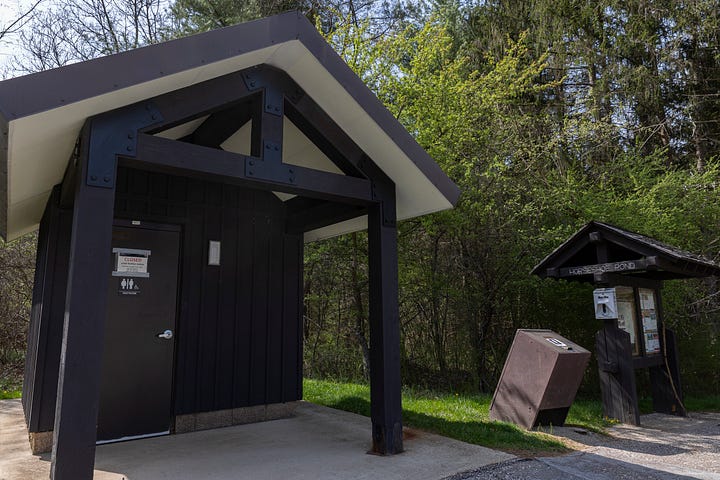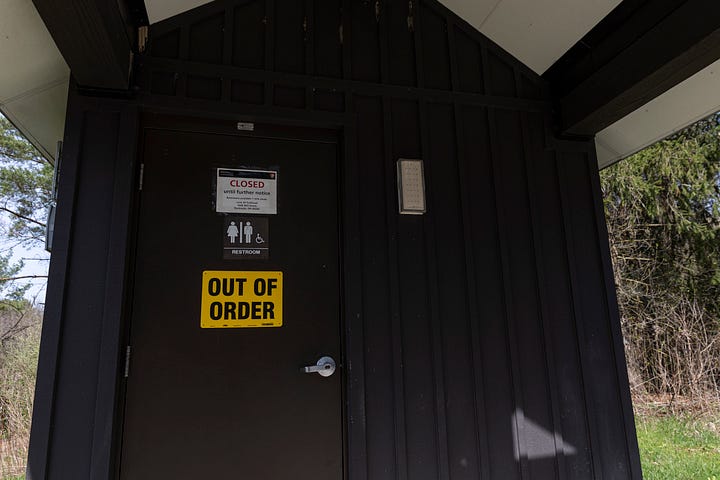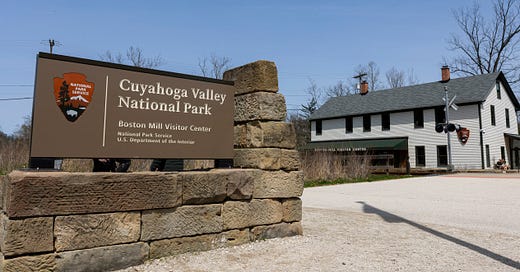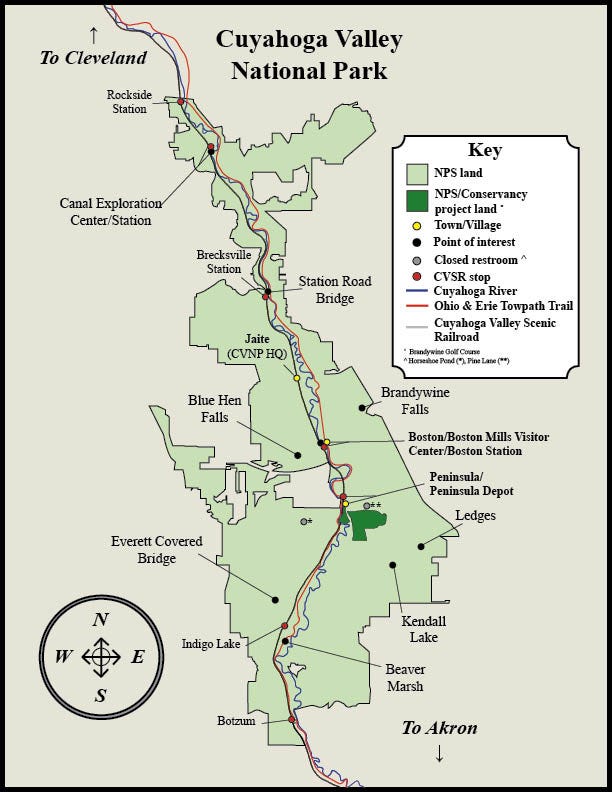Cuyahoga Valley National Park faces layoffs, uncertainty ahead of busy season
Ohio's only national park lost four probationary workers in the Feb. 14 layoffs that fired 1,000 employees across the National Park Service.

Among the 1,000 probationary workers of the National Park Service fired in the Feb. 14 mass layoffs across the federal government, four were in Cuyahoga Valley National Park, Ohio’s only national park.
The four workers included a biologist, a maintenance worker, a engineer and a planner. The 1,000 fired employees comprised about 5% of the park service workforce, while the four let go in CVNP made up 4% of the 91 permanent workers of the park.
This move was made by the Trump administration’s Department of Government Efficiency to downsize the federal workforce and slash budgets. All probationary workers were within a one-year period since beginning in their positions, either as new to the park service or having moved from a different position.
Located along 20 miles of the Cuyahoga River between Cleveland and Akron, CVNP encompasses 32,597 acres between Summit and Cuyahoga counties. It was established as a national recreation area in 1974 and designated as a national park in 2000. In 2024, the park drew in 2.91 million visitors, making it the 12th most visited national park in the country according to park service visitation data. Owing to its proximity to major urban areas and not having an entrance fee – one of only 16 to do so – CVNP is easily accessible to millions across Ohio and the Midwest. According to park service visitor spending reports, CVNP had an economic output of over $225 million to local economies in 2024.
For the 2025 fiscal year, the park requested an operating budget of $13.2 million, up from 2024’s $12 million budget, according to the Department of the Interior’s 2025 budget justification for the park service.
In mid-March, judges ordered the government work to reinstate the fired probationary workers, though the administration challenged these rulings. On April 8, the Supreme Court issued a halt to the re-hirings, putting the status of hundreds of employees in limbo. Many that were reinstated were put on administrative leave. When asked via email, CVNP public informations officer Pamela Barnes declined to comment on the status of the four employees, so their current standings are unavailable to the public.
Effects of the layoffs
Due to its popularity, various points of interest and relatively small workforce compared to other national parks, the four layoffs are likely to have ripple effects as the busy season begins. Deb Yandala, the president and CEO of the Conservancy for Cuyahoga Valley National Park – CVNP’s official non-profit partner that aids in funding, contributing volunteers, land acquisition and project development – said the rhetoric from the Trump administration around federal employees is dangerous to both the agencies and people they are targeting.
“On the federal side, this has been a really tough couple months, and I will say it starts with the rhetoric about federal workers being lazy, federal workers are inefficient, they’re not productive,” Yandala said. “That kind of rhetoric is not helpful to any human being, especially in the National Park Service. They’ve been understaffed for a number of years. Budget cuts over the years have caused them to really be at what I view as a pretty minimum level in terms of the size and scope in this highly visited national park. So even losing the four probationary workers made a difference.”
In conjunction with the park service, the conservancy has been working on a land remediation project of the former Brandywine Golf Course, just south of the park’s primary gateway community of Peninsula. The conservancy purchased the 213-acre property in 2022, then sold 198 acres to the park service. The conservancy has finished the remediation of its 15 acres, but the 198 under park service control are still being worked on. Yandala worries that losing one of the park’s planners will significantly slow down the progress of the project.
“The place where I am saddest about tied to that property is one of the four probationary workers, the park planner, a really talented gentleman,” she said. “I’m fearful, if this is another layoff, that we’re going to lose him, and that’s going to slow down the planning process and the implementation process on the park service land.”
Coming into CVNP’s main season, which typically spans from mid-April to mid-November, effects of the layoffs have already began to be seen throughout the park. In social media posts on April 2, the park announced that three pit-toilet bathrooms would be closed indefinitely: the bathrooms at the Pine Lane trailhead, Horseshoe Pond, and near the Boston Store. The Pine Lane and Horseshoe Pond sites, both near Peninsula, remain closed, while the Boston Store bathroom was reopened soon after the posts. Yandala said she expects more resources to become unavailable as staffing becomes strained.
“Already, the park has made the decision to close two vault toilets because they just don’t have the custodial staff to keep on top of it,” she said. “It’s hard for me to project until we see where these positions are not filled, but I think it’s going to be hard to maintain the level of programming that’s happened in the past.”


Other staffing concerns
Before the initial Feb. 14 layoffs, the Trump administration announced a pause to the hiring of 5,000 seasonal positions within the park service, which included 43 in CVNP. Seasonal hires make up about a third of the park’s 134 workers and include maintenance and custodial workers, rangers, biologists and EMTs.
Shortly after the mass firing of permanent probational employees, the administration reversed the seasonal hiring freeze in late-February. However, that was well past when the park service expected to have most seasonal positions already lined up. Typically, the hires would have an offer by late-January, but those job offers were rescinded with the freeze. The park service is only now filling the seasonal positions and beginning to train employees, well after it usually would.
At the March 27 Akron Roundtable event, CVNP Superintendent Lisa Petit said getting seasonal staff trained would be the biggest challenge. “We are definitely in a transition time,” she said. “A time when we are challenged to get staffing to deal with our busy summer season.”
Though the process of seasonal hirings was delayed, Bill Ridgeway, a volunteer with CVNP working in the Boston Mills Visitor Center in his third season with the park service, said he has not seen any issue with getting the positions filled.
“As far as I can see, I think a lot of the seasonal stuff is in place,” Ridgeway said. “I just checked the listing for today, nothing’s closed. And one advantage we have is that we’re an open park. We don’t have entrance stations to control access in and out. So it’s good and bad, in the sense that you don’t have that ability to control the volume coming in.”
Because CVNP has completed most of its major projects of the past two years, which mostly focused on river bank stabilization of various areas of the Cuyahoga River, Ridgeway said the late seasonal hiring will likely have little effect on the park’s long- term projects.
“They pretty much finished all the work they were doing on the river, there was a lot of places, because it’s a very curvy river, so it’s had its challenges with erosion, and sometimes that affected the train being close to the tracks, and sometimes it affected the Towpath Trail,” he said. “So they had a number of projects that they’ve worked on over the last two years, and those are done. There is one project they’re finishing up now to replace a culvert up by Brandywine (Falls) , and that one is, I think, scheduled to be done early summer.”
Park service involvement throughout Ohio
Although the vast majority of the land managed by the park service in Ohio is within CVNP, the agency manages seven historical sites and monuments throughout the state, making up over another 1,980 acres. However, amid the staffing concerns within the park service, there is possibility of the agency coming to manage even more land across the state.
The 1,447 mile Buckeye Trail loops around Ohio and is currently conducting feasibility studies to acquire a national scenic trail designation, which would put it in the company of major trails like the Appalachian Trail and North Country Trail, which overlaps with the Buckeye. That designation would most likely put the Buckeye under the purview of the park service. The trail is currently maintained by the Buckeye Trail Association out of Shawnee, Ohio. Steve Walker, the president of the BTA, said he has been seeking designation since he took the position.
“It started back when I became president of the Buckeye Trail Association,” Walker said. “Back in 2017, I thought that perhaps the Buckeye Trail deserved National Scenic Trail status, and so it’s been a sort of a growing priority during that time, and we’ve had some luck with some good legislators that helped us to get the feasibility study bill through Congress, with that feasibility study going on right now.”
The trail is divided into 26 sections, each about 50 miles. Much of the Akron section lies within the borders of CVNP, meaning the trail already has ties to the park service. If the trail got the designation, management would be split between the Buckeye Trail Association and the park service. Walker said that could lead to more funding and boots on the ground to manage the trail.
“I think it would provide us with more resources,” he said. “One of the things that would have to come about if we do become a National Scenic Trail would be a management plan that would have to be worked out. If it becomes a National Scenic Trail, then there would be a management plan worked out, there would be a federal partner that would be managing the trail.”
Recreation, public outcry and the park’s future
One main draw of the park is the Ohio and Erie Towpath Trail, a limestone gravel trail that follows the path of the Ohio and Erie Canal that is popular with cyclists and walkers. The path extends to Lake Erie in the north and to the town of New Philadelphia in the south. It serves as the northern section of the Ohio to Erie Trail, going from the Ohio River to Lake Erie. Another popular draw is the Cuyahoga Valley Scenic Railroad, which takes visitors the length of the park on a sightseeing excursion.
Along with cyclists on the towpath, mountain bikers can ride at the East Rim trail system between Peninsula and the popular Brandywine Falls. Christopher Downing of Hudson, Ohio has been riding the East Rim mountain bike trails for six years. Downing is passionate about the cuts to the park service and said he thinks they were ill-informed.
“It’s chaotic,” Downing said. “I think the intent was ill intent. I don’t see any reason why the park system needed to be targeted at all for cuts. I think people who really hold those positions, those jobs, just do a fantastic job across the country, maintaining the park systems, and I’ve never seen any abuse. I don’t really see any reason to have cuts at all for the park system.”
Downing also said he wants the government to stop targeting the park service. “I hope to get back to a point where the staff is brought back to that existing level and people realize that the park system really shouldn’t be targeted, if only for the sake of disruption and reducing staff.”
On March 1 and 22, protests were held in support of the park service at sites across the country. According to Yandala, activists have turned out almost every weekend at CVNP. “Every weekend we’re getting protesters because so many people love this park and don’t want to see it touched,” she said. Yandala said despite the challenges of the past three months, ultimately she is hopeful that CVNP will stand strong, as the park was built on resilience. “This is a national story of recovery and restoration,” she said. “When you have good, well planned environmental regulation, this is what happens. The park will survive. The park is the park, and we’ll get through this somehow.”
“The park is the park, and we’ll get through this somehow,” — Deb Yandala, president/CEO, Conservancy for Cuyahoga Valley National Park




